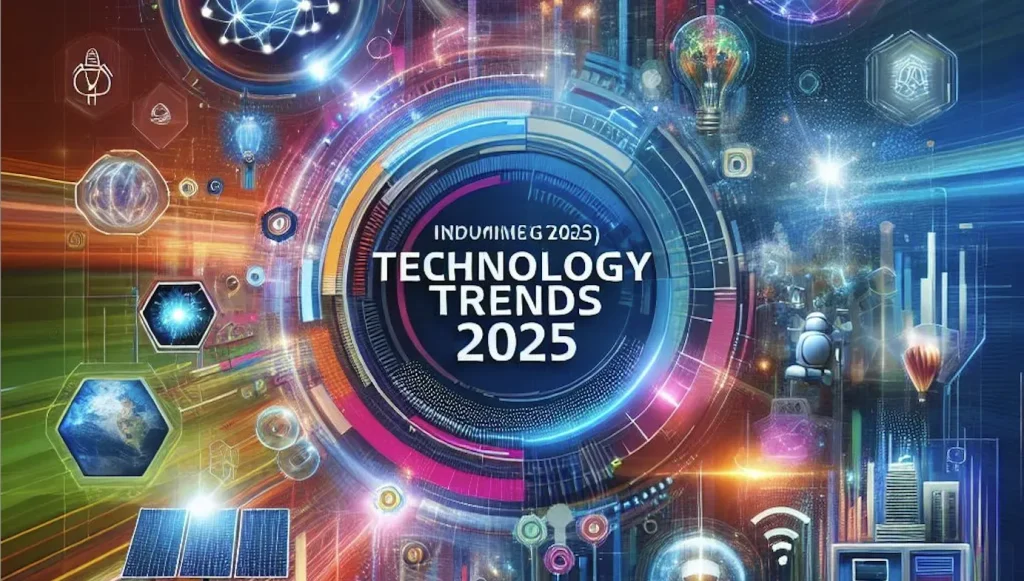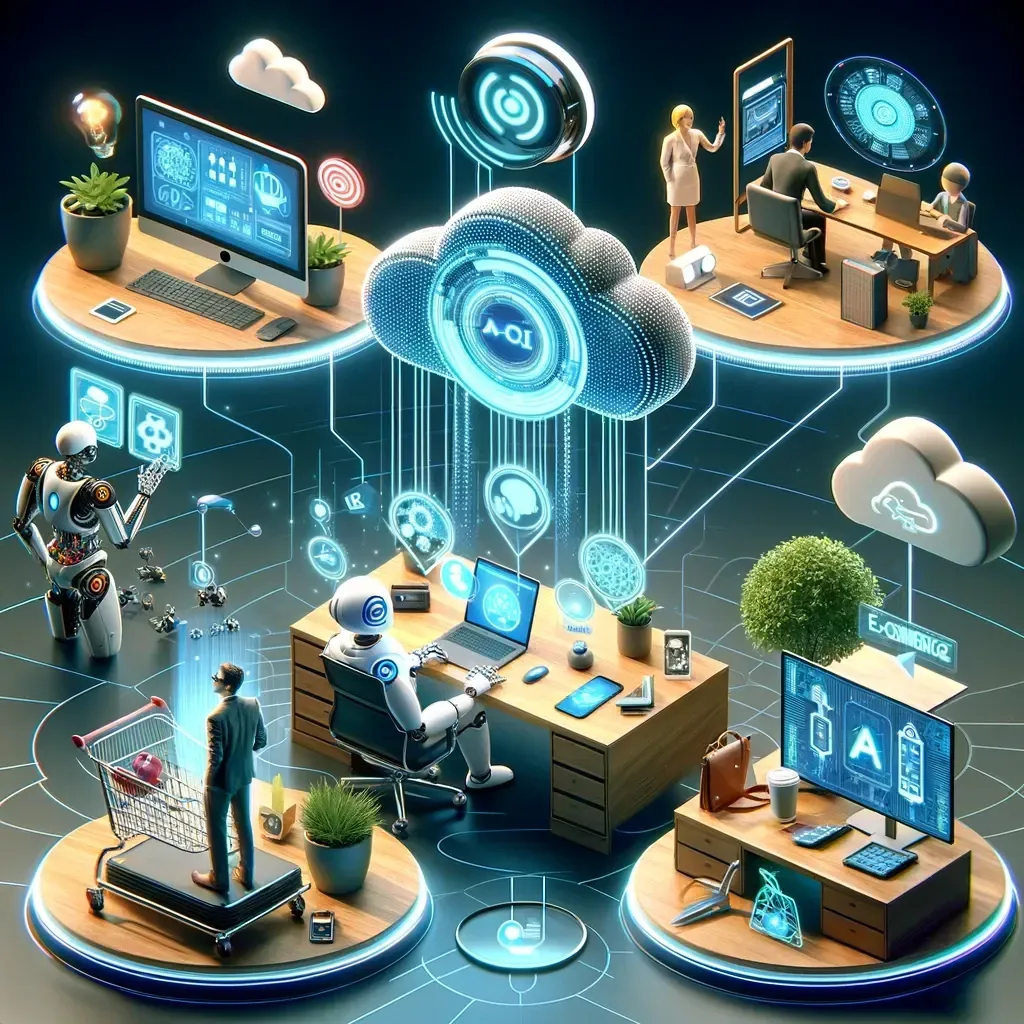Technology Trends 2025 are reshaping how organizations operate, how products are built, and how people interact with digital systems. AI in 2025 moves beyond simple automation to become a pervasive enabler of decision support, productivity, and personalized experiences. IoT innovation 2025 connects devices into trusted networks that provide real-time insights and smarter operations across industries. The fusion of 5G and edge computing slashes latency and unlocks new capabilities, while cybersecurity trends push toward zero-trust, continuous monitoring, and AI-assisted defense. Together with quantum computing advancements and evolving governance, these shifts help leaders prioritize investments, talent, and resilience as they navigate a fast-changing digital landscape.
From a broader perspective, this mid-decade digital evolution is defined by integrated ecosystems where intelligent software, connected devices, and fast networks converge to optimize workflows. The core ideas mirror machine intelligence embedded in products, expanding sensor networks, and resilient connectivity that empower proactive maintenance and personalized services across sectors. As organizations plan roadmaps, embracing trusted data, scalable architectures, and governance becomes essential to harness these converging forces without compromising security or privacy.
Technology Trends 2025: AI in 2025, IoT innovation 2025, and the Connected Ecosystem
Technology Trends 2025 are reshaping how organizations operate, how products are built, and how people interact with digital systems. As we move deeper into the decade, the focus shifts to ecosystems that knit together data, devices, and processes to unlock new levels of productivity and resilience.
AI in 2025 is no longer a standalone capability but an embedded driver across software, hardware, and decision workflows. IoT innovation 2025 expands from isolated sensors to an integrated nervous system that fuels proactive maintenance, dynamic pricing, and smarter customer experiences. Together with advances in edge computing and secure connectivity, these trends create a foundation for intelligent, adaptive enterprises.
AI in 2025: From Automation to Augmentation
AI in 2025 is moving from stand-alone automation to a pervasive augmentation layer across products and platforms. Enterprises are adopting responsible AI practices to ensure models align with business goals, regulatory requirements, and user trust. Expect AI to power predictive analytics, autonomous operations in manufacturing and logistics, and personalized experiences in consumer apps.
Generative AI evolves from novelty to a practical tool that enhances creativity, code generation, content creation, and customer service. However, this capability requires transparent model training, bias mitigation, data provenance, and ongoing governance to maintain safety and ethical standards.
IoT innovation 2025: A Connected Nervous System for Operations
IoT innovation 2025 is about scale, security, and insight. The leap from standalone smart devices to a network of edge-enabled sensors and actuators enables real-time monitoring, automated workflows, and data-driven optimization across manufacturing, agriculture, healthcare, and cities.
Edge processing reduces latency and improves privacy, while cloud platforms provide orchestration, analytics, and deeper insights. Interoperable protocols and standardized data models accelerate deployment and resilience, enabling rapid iteration tailored to regional needs.
5G and edge computing: Latency Defined for Real-Time Applications
5G networks and edge computing are central to modern digital experiences. 5G delivers higher bandwidth, lower latency, and greater device density, enabling autonomous vehicles, remote surgery, and large-scale IoT deployments.
Edge computing brings compute power closer to data sources, enabling real-time analytics and faster decision-making without backhauling every packet to a central data center. Private 5G networks and hybrid edge architectures are increasingly common to ensure predictable performance and improved security.
Cybersecurity trends: From Perimeter Defense to Continuous Assurance
As digital touchpoints expand, cybersecurity trends in 2025 emphasize resilience, continuous monitoring, and proactive risk management. Zero-trust architectures, identity-based access controls, and AI-assisted threat detection are becoming standard practice.
Organizations are adopting secure software development lifecycles, supply chain security measures, and privacy-preserving data practices to reduce exposure and maintain customer trust. AI-enabled security operations centers (SOCs) improve anomaly detection and response, while governance frameworks ensure compliance across jurisdictions.
Quantum computing advancements and frontier tech: Expanding the Frontier
While widespread quantum computing remains a longer-term prospect, 2025 continues to advance understanding, experimentation, and the early adoption of quantum-inspired algorithms. Early-stage quantum hardware, error mitigation techniques, and hybrid quantum-classical approaches open doors for optimization, encryption, and complex simulations.
These developments set the stage for breakthroughs that could redefine computational limits tomorrow and influence strategic decisions across industries. As quantum computing advances, organizations are exploring quantum-ready architectures, risk scenarios, and the potential to accelerate research in logistics, materials science, and climate modeling.
Frequently Asked Questions
How does Technology Trends 2025 shape AI in 2025 for enterprises?
Technology Trends 2025 are moving AI in 2025 from a showcase technology to reliable augmentation. Enterprises should prioritize governance, explainability, and data provenance while leveraging AI for predictive analytics, autonomous operations, and personalized customer experiences.
How does IoT innovation 2025 transform operations and maintenance?
IoT innovation 2025 enables an integrated network of edge-enabled sensors and actuators that feed real-time insights for proactive maintenance and optimized operations across industries. Edge processing reduces latency and improves privacy, while interoperable protocols speed deployment and scale.
Why are 5G and edge computing central in Technology Trends 2025?
The 5G and edge computing combination under Technology Trends 2025 delivers higher bandwidth, lower latency, and dense device support, enabling applications like autonomous systems and remote services. Edge computing brings analytics closer to data sources for real-time decision making and efficiency.
What cybersecurity trends should organizations adopt as part of Technology Trends 2025?
Cybersecurity trends in 2025 emphasize zero-trust, continuous monitoring, and AI-assisted threat detection as core practices. Secure development lifecycles, supply chain security, and robust data governance help sustain resilience and trust in a highly digital environment.
What role do quantum computing advancements play in Technology Trends 2025?
Quantum computing advancements are progressing through quantum-inspired algorithms, early hardware, and hybrid quantum-classical approaches, unlocking potential in optimization and encryption. While practical enterprise adoption is gradual, these developments set the stage for transformative capabilities.
How should organizations approach cloud, data strategy, and governance in Technology Trends 2025?
In Technology Trends 2025, organizations should align cloud and data architecture with strong governance by adopting multi-cloud and data fabric concepts, privacy controls, and clear data residency considerations. This balance enables fast, secure, and compliant insights that support responsible innovation.
| Trend Theme | Summary (What it Means in 2025) | Implications for Organizations |
|---|---|---|
| AI in 2025: From Automation to Augmentation | AI is embedded across software, hardware, and decision workflows; emphasis on reliability, explainability, governance, and responsible AI. Generative AI advances productivity in analytics, autonomous operations, creative tools, and customer service. | Align models with business goals and regulations; invest in governance; improve productivity, personalization, and trust; monitor bias and data provenance. |
| IoT innovation 2025: A connected nervous system for operations | Scale, security, and real-time insight from edge-enabled sensors and actuators. Edge processing reduces latency; cloud platforms orchestrate analytics and deeper insights; standardized protocols enable interoperability. | Enable proactive maintenance, reduce downtime, tailor offerings regionally, and accelerate iteration with secure, interoperable IoT ecosystems. |
| 5G and edge computing: Latency redefined | 5G increases bandwidth and device density; edge computing brings compute near data sources for real-time analytics and faster decisions. Private 5G and hybrid edge architectures improve performance and security. | New product delivery models, improved security, and reduced backhaul costs; faster time-to-market and resilient operations. |
| Cybersecurity trends: From perimeter defense to continuous assurance | Zero-trust architectures, identity-based access controls, and AI-assisted threat detection; secure software lifecycles; supply chain security; privacy-preserving practices; SOCs with AI for faster response; governance frameworks. | Strengthened resilience, regulatory compliance, and trust across jurisdictions; emphasis on continuous monitoring and risk management. |
| Quantum computing and frontier tech: Expanding the frontier | Quantum-inspired algorithms and early quantum hardware with error mitigation and hybrid quantum-classical approaches. Potential for optimization, encryption, and complex simulations. | Strategic planning for long-term opportunities; exploring quantum-enabled advantages in logistics, materials, and modeling. |
| Cloud, data strategy, and the new architecture | Multi-cloud approaches, data fabric, and advanced analytics enable scalable data harmonization and insight. Strong data governance, privacy controls, and data residency considerations are essential. | Faster, safer, and more compliant data-driven decision-making; agile architectures that balance speed with governance. |
| Workforce, skills, and governance in Technology Trends 2025 | Talent needs evolve with AI ethics, data science, cloud engineering, cybersecurity, and product leadership. Emphasis on reskilling and upskilling; clear ownership and risk management in governance. | Build capable teams, manage risk, and sustain competitive advantage through ongoing learning and accountable innovation. |
Summary
Conclusion: Technology Trends 2025


